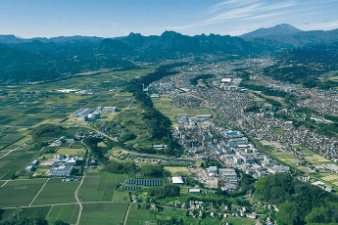Achieving a Sustainable Society
Reduction of environmental impact in plants
: Naoetsu Plant
Efforts to reduce the environmental impact of the Shin-Etsu Chemical Naoetsu Plant
Shin-Etsu Chemical Naoetsu Plant is located in the north of Joetsu City, which is at the southeast of Niigata Prefecture in the center of the coastal area facing the Sea of Japan. With the expansive Sea of Japan to the north, as well as Joshin'etsu-kogen National Park and the lush Kubiki Plain to the south, the area is surrounded by natural landscapes that change with the seasons. This region has prospered as a key area for transportation for centuries. It has a favorable environment for going to and from local communities, the Kansai region, or the Greater Tokyo Area, with the vital harbor of Naoetsu Port, the Hokuriku Expressway and Joshin-etsu Expressway for land travel, as well as the Hokuriku Shinkansen.
The Naoetsu Plant produces a wide range of chemical products and highly functional products, as well as promotes research and development to cater to the latest needs, including caustic soda, chloromethane, chlorosilanes, silicone products, cellulose derivatives, synthetic pheromones products, synthetic quartz, photomask blanks, photo resists, and low dielectric materials for 5G. We engage in activities with the aim of helping to achieve a sustainable society and contributing to people's lifestyles, communities, and industries.
Promotion of Energy Efficiency and Reduction of Greenhouse Gas Emissions
Introduction of Cogeneration System
The Naoetsu Plant has two power generators (in a cogeneration system using gas turbines), and it generates electricity and steam using natural gas as a fuel with low emissions of greenhouse and toxic gases. The steam is used for heating processes within the plant, as well as for generating electricity with steam turbines (in a combined system). We proactively promote initiatives for saving energy and reducing greenhouse gas emissions.
-
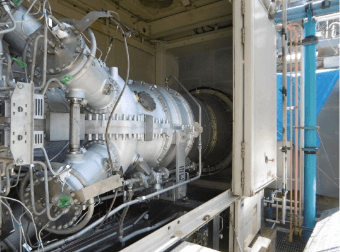
Gas turbine generator
-
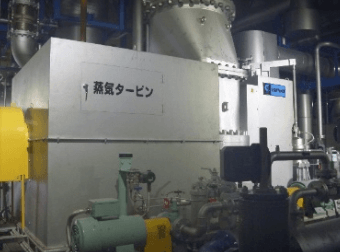
Steam turbine generator
Introduction of nitrogen recovery equipment
The plant uses large quantities of oxygen and nitrogen for chemical reaction processes and for ensuring safety in the facility. To this end, we use an air separator to isolate oxygen and nitrogen from the air to obtain these two gases at a stable level of quality. The exhaust gas from this process contains a high proportion of nitrogen, and we collect and reuse it to obtain more nitrogen gas while also saving energy.
-
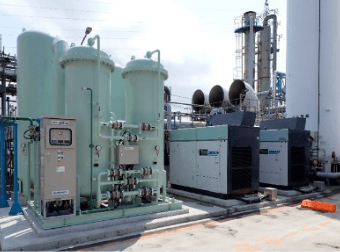
Nitrogen recovery equipment
We are proactively engaging in many other efforts to save energy, such as reducing the amount of steam used in distillation and solvent recovery in chemical processes, updating our equipment with high-efficiency coolers and gas compressors, and achieving greater efficiency in our clean room air conditioners. While we avoid holding in-person meetings in light of the COVID-19 pandemic, we collaborate across the plant to seek out ideas for reducing greenhouse gas emissions, and we are discussing the use of advanced technologies for waste heat recovery, CO2 recovery, and other applications. Going forward, we will continue to drive initiatives to realize a decarbonized society.
-
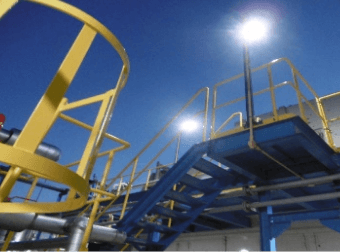
Implementing LEDs for plant lighting
Approaches to the preservation of water resources
The Naoetsu Plant has two large anaerobic wastewater treatment facilities. The methane (biogas) generated as a product of the wastewater purification process is effectively used as boiler fuel. In addition, we have deployed a carrier* that immobilizes fungi and bacteria in our aerobic wastewater facilities, thereby aiming to achieve high densities in the activated sludge process and thereby boost processing capabilities. We also have a sedimentation treatment facility that isolates the solids suspended in the water and purifies the water to be clean and clear.
- * Carrier
A substance that serves as a base for affixing to other substances, such as adsorbing exhaust gas components or rare metals.
Approaches to Reducing Waste Materials
The plant promotes activities to reduce waste materials generated in manufacturing and processing. For example, we take the paper materials that would otherwise be discarded in the manufacturing process, and we effectively utilize them by making recycled paper. We are also proactively considering ways to recycle the solvents from chemical reaction processes or create formulations that allow them to be reused.
-
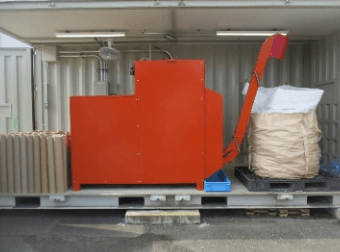
Crushing device for unnecessary paper materials
-
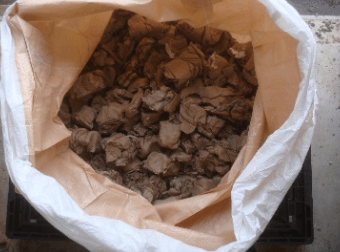
Converting unnecessary paper materials into raw materials
Achieving a Sustainable Society
Solving social issues through the products
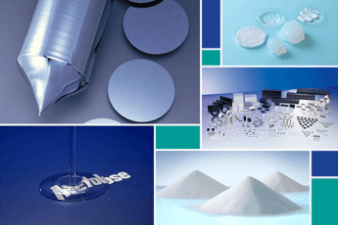
With the environment
Silicones Polyvinyl chloride resin (PVC) Rare Earth MagnetsComfortable living
Polyvinyl chloride resin (PVC) Caustic soda Silicon wafers/ Magnet Silicone Electrophysiological Dry Electrodes /High-Stretchable Wiring Material Cellulose derivativesReduction of environmental impact in plants
